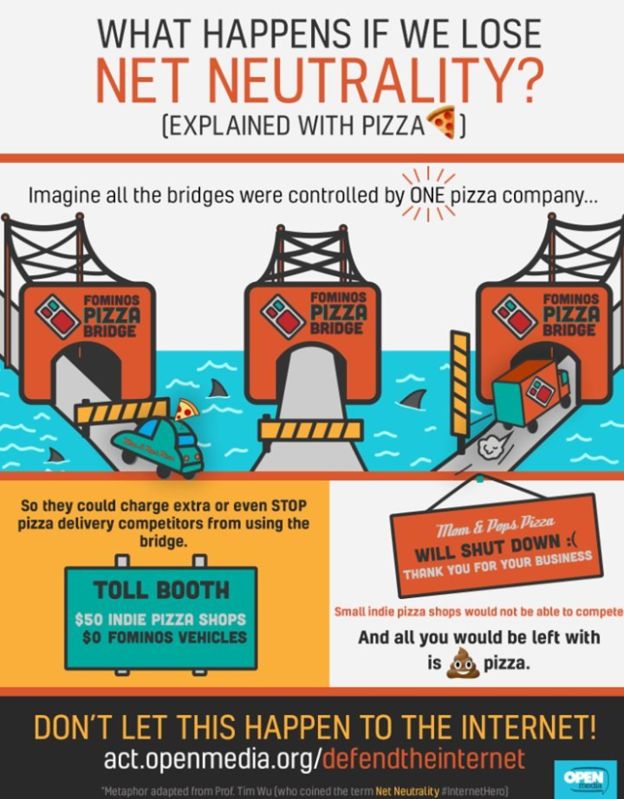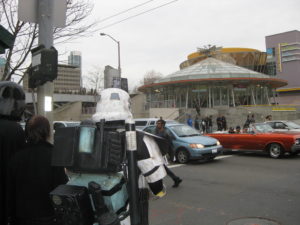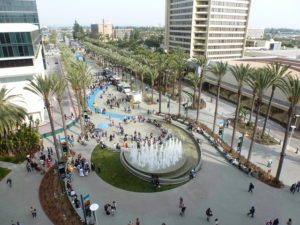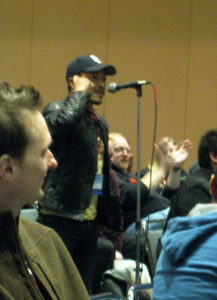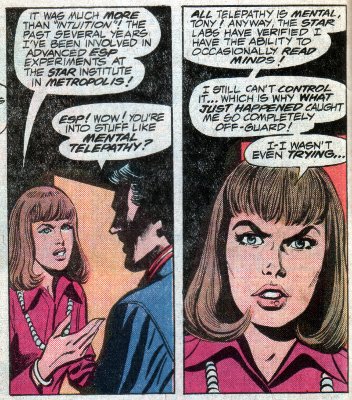The FCC wants to eliminate net neutrality, the principle that ISPs should treat all traffic the same, and not block, throttle, or promote data based on what service you’re using or who you’re connecting to. But we can stop them.
What’s Net Neutrality? Simple: your cable company shouldn’t decide where you get your news, what businesses you buy from, which video chat services and streaming services you use, or who you talk to.
Why do we need it? It used to be an unofficial rule, underlying the way the Internet was built over the years, until ISPs started to break it. For example:
- Multiple ISPs intercepted search queries and sent them to their own portals.
- AT&T blocked Skype on the iPhone.
- Verizon blocked tethering apps.
- Multiple carriers blocked Google Wallet in favor of their own payment services.
In 2015, after a public advocacy campaign, the FCC made it official: ISPs in the United States are now required to treat all traffic equally.
So what’s the problem? There’s a new chairman in charge, and he wants to remove the rule.
No doubt cable and phone companies will go back to their old tricks. Plus they could slow down access to news sites that disagree with them, or charge websites extra for the privilege of reaching their audience (when they already pay for their upload connection), or slow down services owned by competitors (consider: Verizon owns Tumblr and Flickr now, and Comcast owns NBC) in favor of their own.
That’s right: free speech, fair competition, and the price you pay for your internet service are all protected by net neutrality.
Rolling back net neutrality doesn’t help you, doesn’t help business, doesn’t help anyone but the existing carriers.
That’s why I’m joining the Battle for the Net — and you can, too. The FCC’s public comment period is still open. Contact the FCC and Congress (here’s a form), and tell them why Net Neutrality matters to you. Then spread the word.
Keeping the internet open is critical. Let’s work to keep it!
